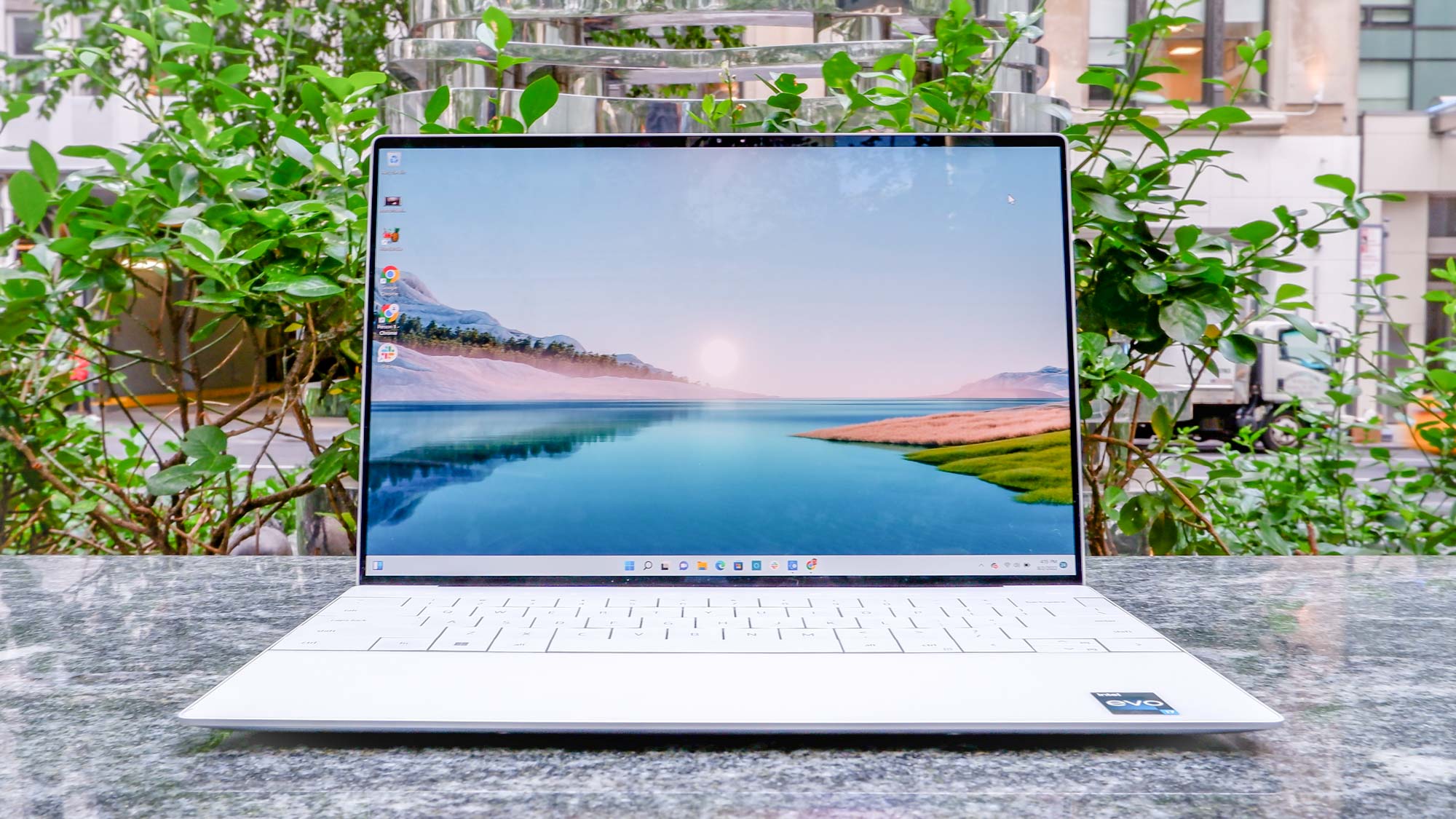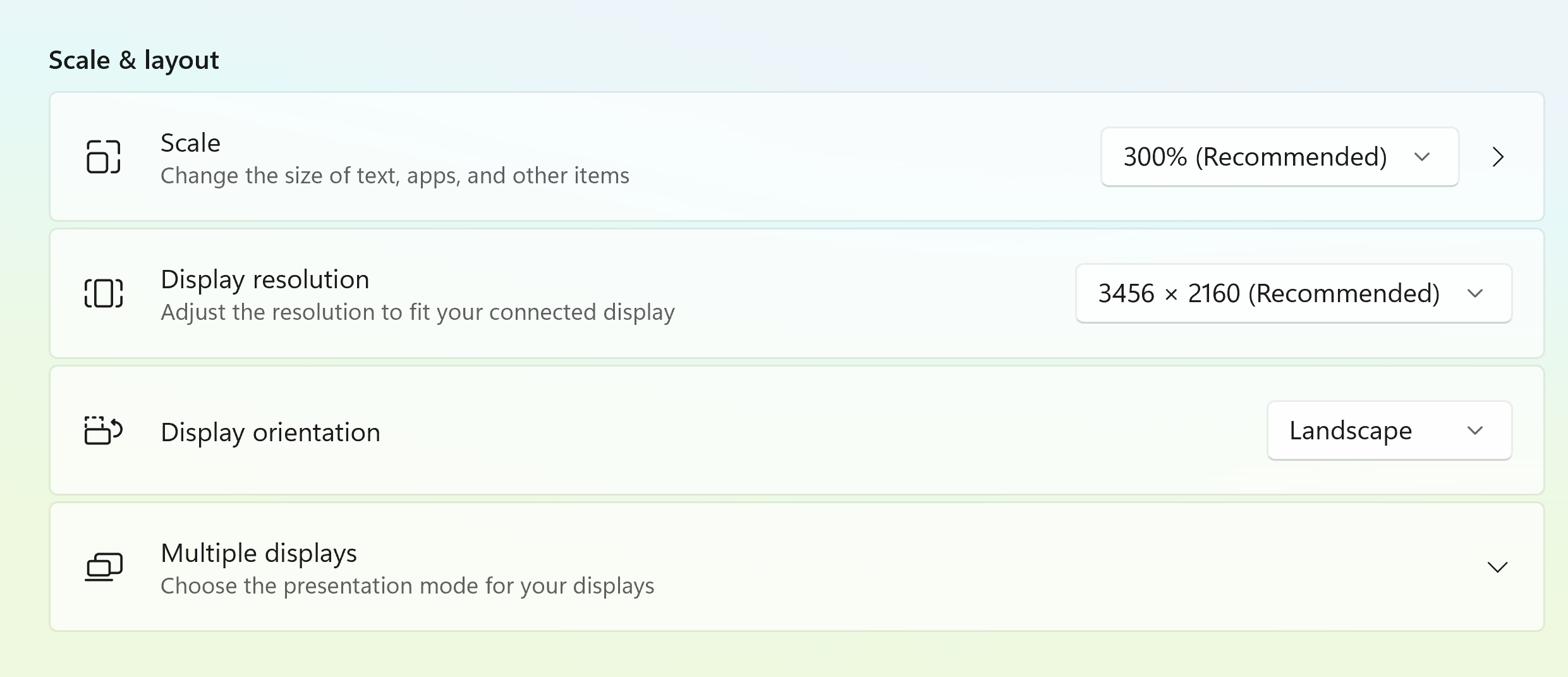I'll never buy a 4K laptop and you shouldn't either — here's why

I review laptops for a living, as well as desktop PCs, monitors, tablets and the occasional gadget. That means I spend a lot of my day looking at screens and thinking about whether they're worth the price you pay for them.
I've been doing this for years, and I've watched laptop tech improve faster than I would have ever thought possible. The last laptop I purchased is an 8-year-old Dell XPS 13, and I can remember when its 1080p panel looked amazing to my eyes. But when I plug it in (the battery no longer holds a charge) and set it up next to a new Dell XPS 13 Plus (2023) with its 3.5K OLED display, my poor old 2015 XPS looks like a child's tablet.
Even if you compare a modern laptop with a great LCD display against an OLED-equipped competitor, I think you'll see an appreciable difference in image quality between the two. I've become a big fan of OLED screens because they just look nicer, at least to my eyes. The fact that blacks on an OLED are truly black (that is, the pixels are switched off entirely rather than displaying backlit black tones) makes for sharper contrasts and more vivid colors, since they stand out better against the deep, inky blacks you get on an OLED screen.
But while I've become a big OLED head (heck, I shelled out for a new LG C2 OLED TV after everyone on staff who had one raved about them) I'm a lot less enthusiastic about the rise of 4K displays on laptops. We saw the first laptops with 4K screens hit the market years ago, and now the tech has matured enough that you can get anything from a slim 13-inch ultraportable to a heavy 17-inch gaming laptop with a 4K display.
But after reviewing dozens of laptops over the past few years, with all sorts of different resolutions and screen sizes, I'm convinced 4K resolution is often a waste of money on a laptop. In fact, I think it might even be worse for your health and productivity than a cheaper, lower-resolution display.
Here's why.
You're paying for the privilege of squinting
The appeal of 4K over lower resolutions is pretty easy to grasp: You get more pixels on the screen, so theoretically you see more detailed images. A truly 4K screen has a resolution of 3840 x 2160 pixels, which is roughly 4x as many pixels as you get on a standard 1920 x 1080 (hence 1080p) display.
Get instant access to breaking news, the hottest reviews, great deals and helpful tips.
And I can tell you from copious hours spent in front of my TV that on a big screen, the difference really is appreciable and worth splurging on. Watching movies or playing games in 4K vs 1080p makes a huge difference in image quality when the screen is 40-60+ inches wide, so much so that if you're still using a standard HD TV I highly recommend upgrading to one of the best 4K TVs when you have the chance —your eyes will thank you.
When I opened this little 13-inch Dell XPS 13 Plus and gazed upon its 3.5K display for the first time, I was absolutely floored by how tiny everything looked.
But it's a lot harder to appreciate all 3840 x 2160 pixels when your 4K display is a 13-inch laptop screen. I know from experience, because I just wrapped up my Dell XPS 13 Plus review with a 3.5K OLED display and I can't read a thing on it without magnification.
Now, that's hardly an insurmountable problem. Windows 11 has some pretty good built-in tools for fiddling with things like text size, display resolution and the like, so you can always lower your laptop's resolution or increase the size of things on-screen. I often do this on small laptops with resolutions higher than 1080p, cranking the scale at which Windows 11 displays things to 125% or 150% because it can get hard to read text even at 1440p (2560 x 1440 pixels) or 1600p (2560 x 1600 pixels).
But when I opened this little 13-inch XPS 13 Plus and gazed upon its 3.5K display for the first time, I was absolutely floored by how tiny everything looked. I had to lean down to within inches of the laptop in order to see well enough to navigate to Windows' display settings, and when I opened the scaler it recommended I boost everything to 300% magnification.

I literally laughed out loud at that, because until now such high magnification settings had always seemed reserved for folks with impaired vision. But I dutifully cranked up the scaling until it was at 300%, and sure enough, the laptop became usable again.
You probably won't make use of true 4K anyway
After I dialed the scaling way up I was able to lean back in my chair with a sigh of relief, free from the painful hunching and squinting required to make use of the laptop at its native resolution.
But even then I had to navigate all the odd usability issues that crop up when you're working at scaled-up resolution, like text formatting itself oddly or not being readable due to mismatched scaling. I ended up having to use both Windows' built-in scaling tools and the Chrome browser scaler in order to make the 3.5K XPS 13 Plus usable as a work machine. So it's doable, but kind of a pain in the butt.
Keep in mind that this is just a 3.5K display on a 13-inch laptop. I have yet to see or use a truly 4K display on a 13-incher, but it's presumably even more of a hassle to use.
And you're paying extra and jumping through these additional steps for...what? So you can watch movies or play games in 4K on your laptop?
Unless you've got the beefiest gaming laptop on the block you'll probably never be able to play your favorite games in 4K at decent framerates. And while you will be able to stream some TV and movies in 4K, I really doubt you'll be able to make out much detail on a small laptop screen, especially if you're streaming over Wi-Fi and don't have the best image quality to begin with.
Plus, 4K displays tend to suck up more power than their lower-resolution counterparts, so going for 4K on a little ultraportable likely means you're getting worse battery life with little appreciable benefit. That certainly seems to be the case with the Dell XPS 13 Plus (2023), which is rated for up to 9 hours of battery life with a 1200p touchscreen but just 7 hours when you upgrade to the 4K screen. And in our battery tests it couldn't even last that long, conking out after an average of 6 hours and 20 minutes.
I'm not saying 4K displays are bad on laptops across the board. I could imagine stomaching the expense (and appreciating the benefits) a bit more easily if I was splurging on a 4K screen for a big 18-inch gaming laptop, for example. You'd still have to scale some things up, but the extra inches might make a meaningful difference in how much of that 4K display your eyes can appreciate. And since a gaming machine that large is meant to be plugged in anyhow, you don't need to worry as much about battery drain.
But frankly, I don't think you can even get an 18-inch 4K laptop right now. Most of the models I've seen or tested top out at 1600p, which is more than good enough for a laptop of any size. And even if you do plan on buying a laptop with a screen large enough that 4K seems like a good idea, I recommend you pass on the 4K display upgrade.
Spend that money on an OLED display or upgrading something useful under the hood (like the RAM or CPU) instead. I doubt you'll miss the extra pixels, and you might save yourself some serious back and neck pain down the road.
More from Tom's Guide
- AMD vs. Intel vs. Apple vs. Qualcomm: Who’s winning?
- AI is key for Intel's new Meteor Lake CPUs
- Apple M3 chip: Early rumors and everything we know

Alex Wawro is a lifelong tech and games enthusiast with more than a decade of experience covering both for outlets like Game Developer, Black Hat, and PC World magazine. A lifelong PC builder, he currently serves as a senior editor at Tom's Guide covering all things computing, from laptops and desktops to keyboards and mice.

